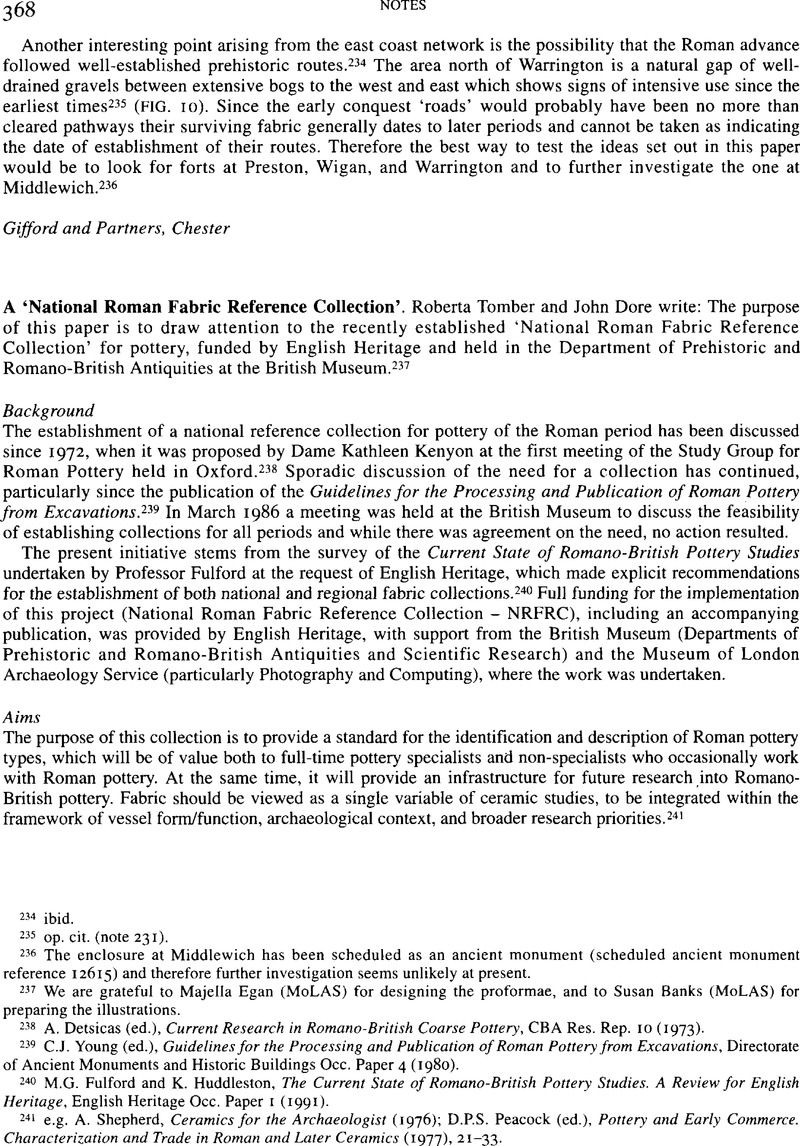Published online by Cambridge University Press: 09 November 2011

234 ibid.
235 op. cit. (note 231).
236 The enclosure at Middlewich has been scheduled as an ancient monument (scheduled ancient monument reference 12615) and therefore further investigation seems unlikely at present.
237 We are grateful to Majella Egan (MoLAS) for designing the proformae, and to Susan Banks (MoLAS) for preparing the illustrations.
238 A. Detsicas (ed.), Current Research in Romano-British Coarse Pottery, CBA Res. Rep. 10 (1973).
239 C.J. Young (ed.), Guidelines for the Processing and Publication of Roman Pottery from Excavations, Directorate of Ancient Monuments and Historic Buildings Occ. Paper 4 (1980).
240 M.G. Fulford and K. Huddleston, The Current State of Romano-British Pottery Studies. A Review for English Heritage, English Heritage Occ. Paper 1 (1991).
241 e.g. A. Shepherd, Ceramics for the Archaeologist (1976); D.P.S. Peacock (ed.), Pottery and Early Commerce. Characterization and Trade in Roman and Later Ceramics (1977), 21–33.
242 Swan, V.G., The Pottery Kilns of Roman Britain, RCHM Supp. Ser. 5 (1984).Google Scholar
243 D.P.S. Peacock and D.F. Williams, Amphorae and the Roman Economy. An Introductory Guide (1986).
244 Peacock, op. cit. (note 241).
245 Munsell Soil Color Charts (1975).
246 Kretz, R., ‘Symbols for rock-forming minerals’, American Mineralogist lxviii (1983), 277–9.Google Scholar
247 E.A. FitzPatrick, Micromorphology of Soils (1984), figs 5.2–5.8.
248 F.J. Pettijohn, P.E. Potter and R. Siever, Sand and Sandstone (1972).
249 FitzPatrick, op. cit. (note 247).
250 Pettijohn et al., op. cit. (note 248).